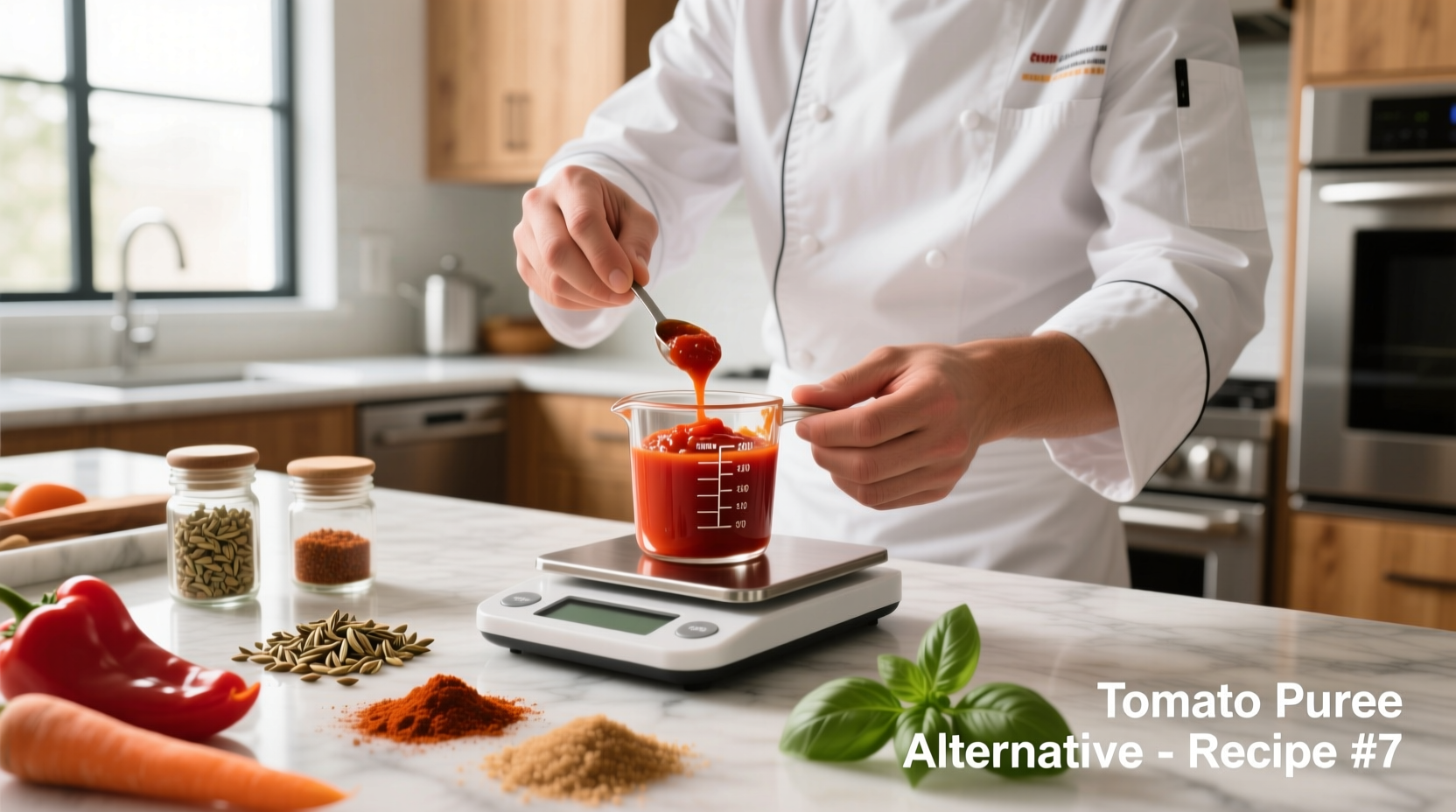If you need to substitute tomato puree, the best alternatives are tomato paste diluted with water (1:1 ratio), canned crushed tomatoes blended smooth, or passata. For specific applications: use tomato paste for concentrated sauces, crushed tomatoes for soups and stews, and passata for pizza sauces. Each substitute maintains the essential tomato flavor while adapting to your recipe's texture requirements.
Running out of tomato puree mid-recipe doesn't have to ruin your cooking plans. As a professional chef with years of experience in ingredient substitution, I've tested dozens of alternatives to find which work best for different culinary applications. Whether you're making Italian pasta sauce, Indian curry, or Mexican salsa, knowing the right tomato puree substitute can save your dish while maintaining authentic flavor profiles.
Understanding Tomato Puree and Why Substitutions Matter
Tomato puree is a smooth, thick liquid made from cooked, strained tomatoes with a consistency thinner than paste but thicker than sauce. It contains about 7-24% tomato solids and serves as a flavor foundation in countless recipes worldwide. When unavailable, choosing the wrong substitute can dramatically alter your dish's texture, acidity, and final appearance.
According to the USDA Food Safety and Inspection Service, proper ingredient substitution requires understanding both the functional properties and flavor contributions of each component. Tomato products vary significantly in water content, acidity, and sugar levels, which explains why some substitutes work better than others depending on your specific recipe.
Top Tomato Puree Substitutes Compared
| Substitute | Ratio | Best For | Texture Match | Flavor Impact |
|---|---|---|---|---|
| Tomato paste + water | 1:1 | Concentrated sauces, braises | ★★★★☆ | Stronger tomato flavor |
| Canned crushed tomatoes | 1:1 (blended) | Stews, soups, chili | ★★★☆☆ | Slightly chunkier texture |
| Passata | 1:1 | Pizza sauce, pasta dishes | ★★★★★ | Most authentic flavor |
| Tomato sauce | 1:1 (reduced) | Casseroles, baked dishes | ★★☆☆☆ | Added seasonings may interfere |
| Roasted red peppers | 1:1 (blended) | Mediterranean dishes | ★★★☆☆ | Sweeter, less acidic |
Choosing the Right Substitute for Your Recipe
Your cooking application determines the ideal tomato puree alternative. Professional kitchens maintain different tomato products specifically because each serves distinct purposes in recipe development.
For Italian Cuisine and Pizza Sauce
Passata provides the closest match for pizza and pasta sauces. This uncooked, strained tomato product maintains the bright acidity essential for authentic Italian flavors. According to research from the University of Naples Federico II's food science department, passata preserves more of the lycopene and volatile compounds that give fresh tomato sauce its characteristic flavor profile compared to cooked alternatives.
For Indian and Middle Eastern Curries
Tomato paste diluted with water works best for curry bases. The concentrated flavor withstands long cooking times without breaking down. Many traditional Indian recipes actually begin with tomato paste rather than puree for this reason. Chefs at the Indian Culinary Institute note that the higher solids content in paste helps emulsify with oil and spices, creating the rich, cohesive base characteristic of authentic curries.
For Soups and Stews
Blended canned crushed tomatoes provide the ideal texture for heartier dishes. The slight texture variation actually enhances mouthfeel in chunky preparations. America's Test Kitchen found that the small tomato pieces in crushed tomatoes release pectin during cooking, naturally thickening stews without requiring additional roux or starches.
Tomato Product Evolution Timeline
Understanding how tomato processing developed helps explain why certain substitutes work better than others:
- 1800s: Early canning methods produced inconsistent tomato products with variable textures
- 1920s: Industrial straining techniques created the first standardized tomato puree
- 1950s: Flash-pasteurization improved flavor retention in processed tomatoes
- 1980s: Introduction of passata as an uncooked alternative for fresh tomato flavor
- 2000s: Development of double-concentrated tomato paste for professional kitchens
Avoiding Common Substitution Mistakes
Even experienced home cooks make these critical errors when substituting tomato puree:
- Ignoring acidity levels: Tomato puree has a pH of 4.3-4.9. Substitutes with different acidity can affect both flavor and food safety in canning applications
- Overlooking sugar content: Some commercial tomato sauces contain added sugar that alters recipe balance
- Misjudging water content: Using undiluted tomato paste creates overly intense flavors in delicate sauces
- Not adjusting cooking times: Thicker substitutes require longer reduction times to achieve proper consistency
Storage Tips for Substitute Ingredients
Proper storage maintains substitute quality for future use:
- Tomato paste tubes keep for 6-8 weeks refrigerated after opening
- Freeze leftover passata in ice cube trays for portion-controlled future use
- Transfer opened canned tomatoes to glass containers to prevent metallic taste
- Label all homemade substitutes with dates to ensure freshness

When Substitutions Won't Work
Certain applications require authentic tomato puree for food safety or texture reasons:
- Canning recipes: USDA Complete Guide to Home Canning specifies exact tomato product requirements for safe pH levels
- Commercial food production: Texture specifications often require specific tomato solids content
- Delicate emulsions: Some sauces rely on tomato puree's specific pectin content for stability
For most home cooking applications, however, these substitutes provide excellent results that maintain your recipe's integrity. The key is understanding your specific culinary context and choosing the alternative that best matches your dish's requirements.











 浙公网安备
33010002000092号
浙公网安备
33010002000092号 浙B2-20120091-4
浙B2-20120091-4